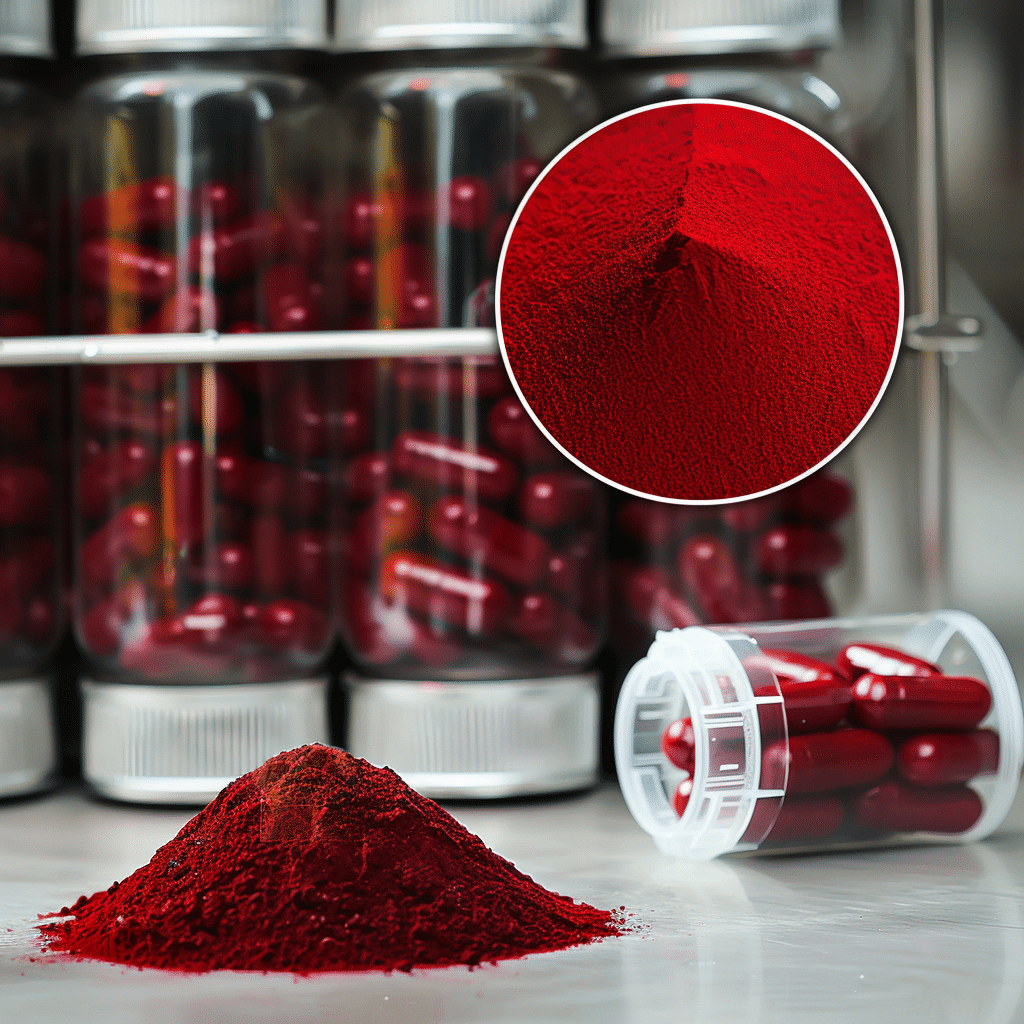Introduction: The Skin-Eye-Aging Connection
As one of the most powerful antioxidants found in nature, Astaxanthin has gained recognition for its ability to combat oxidative stress, particularly in tissues vulnerable to environmental damage: the skin and the eyes. Derived from microalgae like Haematococcus pluvialis, this carotenoid offers photoprotective, anti-inflammatory, and anti-aging benefits that span both cosmetic and functional health sectors.

What Is Astaxanthin?
Astaxanthin is a red-pigmented xanthophyll carotenoid responsible for the color of salmon and flamingos. Unlike beta-carotene or lutein, it has a unique molecular structure that allows it to span both the lipid and aqueous layers of cell membranes, providing comprehensive antioxidant protection.
- Source: Microalgae (main), krill oil, or synthetic production
- Antioxidant Strength: 6000x stronger than Vitamin C and 550x more potent than Vitamin E in neutralizing singlet oxygen (Nishida et al., 2007)
- Lipid vs Water Phase: Functions across both, making it ideal for skin and ocular tissues
Benefits for Skin Health
Astaxanthin works from the inside out to protect skin from UV-induced damage and oxidative stress—two major contributors to wrinkles, pigmentation, and skin aging.
- Reduces Fine Lines and Wrinkles: Increases collagen production and skin elasticity
- UV Protection: Shields skin from UVA/UVB damage
- Hydration and Barrier Support: Enhances skin moisture retention and epidermal barrier integrity
Clinical Evidence:
A double-blind placebo-controlled trial (Yamashita et al., 2006) found that 6 mg/day of astaxanthin improved skin elasticity and reduced fine wrinkles in middle-aged women over 8 weeks.
Eye Health and Retinal Protection
The retina is particularly sensitive to oxidative damage from blue light and metabolic activity. Astaxanthin crosses the blood-retina barrier and localizes in ocular tissues.
- Improves Visual Acuity: Supports blood flow in the retina
- Reduces Eye Fatigue: Especially beneficial for screen-heavy lifestyles
- Protects Against Age-Related Macular Degeneration (AMD): Antioxidant and anti-inflammatory effects
Research Highlight:
A 2012 study (Nagaki et al.) showed that astaxanthin supplementation improved accommodative ability and visual fatigue in VDT (visual display terminal) workers.
Supplementation and Formulation
- Effective Dose: 4–12 mg/day for skin and eye benefits
- Form: Natural astaxanthin from Haematococcus pluvialis preferred for highest potency
- Delivery Format: Softgel, oil suspension, or liposomal formats for improved absorption
- Pairings: Combine with lutein, zeaxanthin, and vitamin E for complete eye support
Regulatory and Market Insights
- GRAS Status: Approved for use in food and supplements by FDA (USA), EFSA (EU), MHLW (Japan)
- Consumer Appeal: Natural origin, clinically studied, and recognized for both beauty and eye health
- Market Trend: Astaxanthin is a top-growing ingredient in nutricosmetics and vision care sectors
Conclusion: One Molecule, Dual-Sector Impact
Astaxanthin stands at the intersection of beauty and health. Its dual-action antioxidant support for both skin and eyes positions it as a high-value ingredient for anti-aging formulations. Backed by strong clinical data and natural origin claims, it continues to shape the future of holistic wellness products.